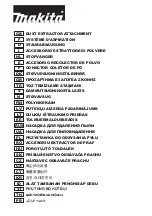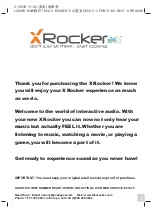
13
8760 Series Compression Adjuster
LOW SPEED COMPRESSION ADJUSTMENT
In the state of slow shaft movement (i.e., corner entry, exit, and
power down), oil is displaced into the reservoir in direct propor-
tion to the area of the shaft entering the shock body. The oil
passes through the compression adjuster where it is metered
through an adjustable needle and jet assembly. By shutting
down the flow of oil, the oil is restricted, causing a stiffer feel in
low speed circumstances. The low speed adjuster works in
conjunction with the high speed adjuster to delay the high speed
circuit.
The low speed compression bleed bypass adjuster has approxi-
mately 30 clicks of adjustment. Turning the adjuster knob
clockwise increases the low speed damping.
HIGH SPEED COMPRESSION ADJUSTMENT
In fast shaft movement (i.e. bumps, track inconsistencies,
etc.), oil is displaced into the reservoir, as in the low speed
state, but at a much faster velocity. The oil is forced to
bypass the low speed needle and jet due to the fact that the
small orifice in the jet causes the oil to hydraulic. In turn,
the oil is forced through another piston in which its orifices
are covered by another shim stack. This shim stack is
preloaded with force from the CD cage and preload shims.
By turning the high speed adjuster clockwise (stiffer), you
are preloading the CD cage and shims, making it tougher
for the oil to flex the shims.
The operation of the high speed adjuster assembly effect is
timed by the adjustment of the low speed needle and shaft
velocity. (i.e., if the low speed needle is full soft, at high
speed a larger volume of oil will initially pass through the
low speed jet slightly delaying the operation of the high
speed bypass mode.)
Turning the black hex adjuster clockwise increases the high
speed damping. There are 24 +/- clicks of high speed
adjustment counting from full soft.
NOTE: When making adjustments on the high speed adjuster, start at the full soft setting (adjuster wound all the way in
against the reservoir body) counting the clicks toward full firm. When adjusting low speed, start at the full firm setting
(adjuster wound all the way in against high speed adjuster) counting the clicks toward full soft. This makes your settings
more precise and less confusing for your records.
Summary of Contents for 8900 series
Page 3: ...3 Notes ...
Page 29: ...29 Damping Adjustments Figure 3 Figure 2 ...
Page 34: ...34 Notes ...













































